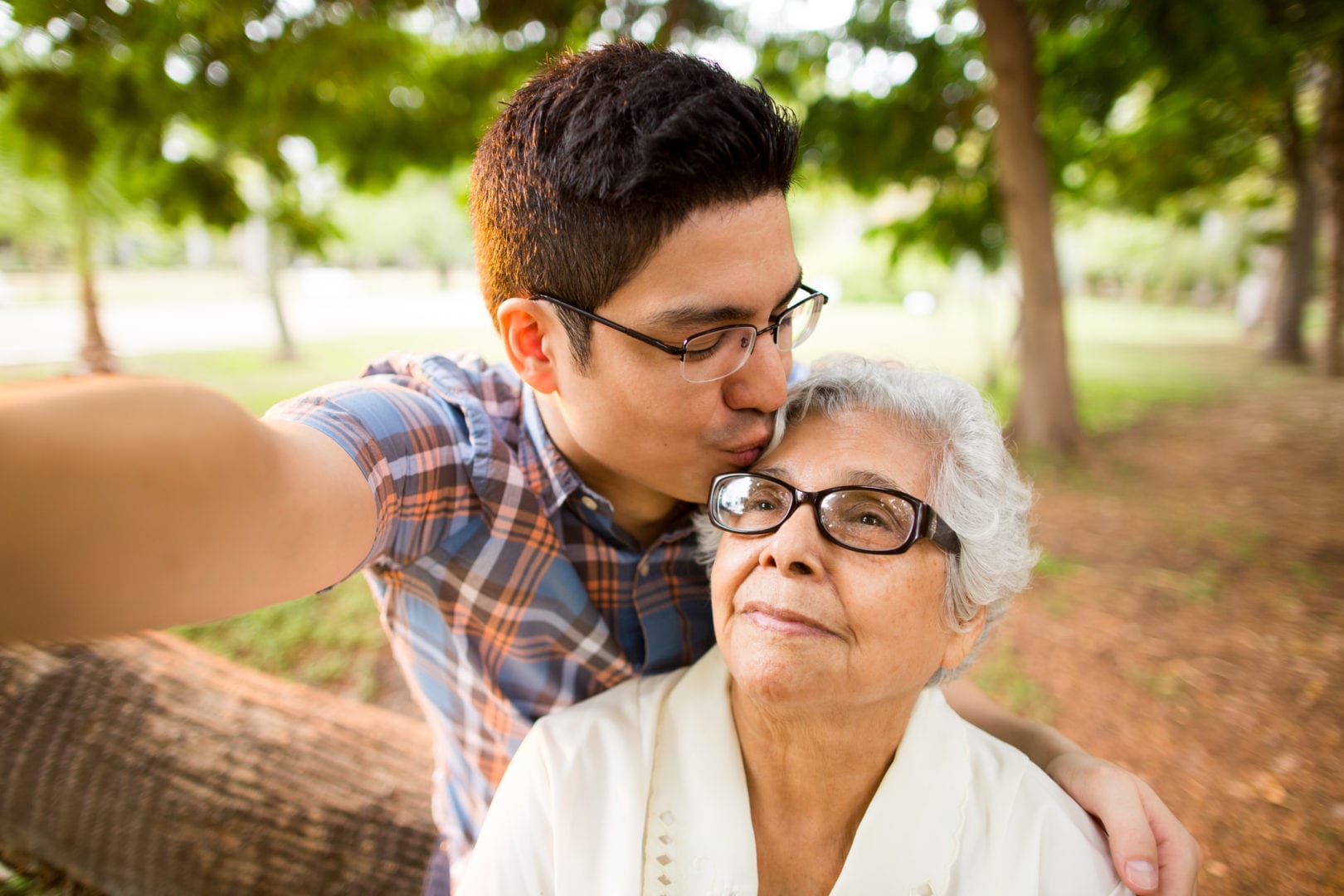As Baby Boomers move into their golden years, their adult-aged children are feeling the financial and emotional strain of caring for them, according to the Care.com 2019 Cost of Senior Care survey. The first annual survey, compiled with insights from more than 7,500 family caregivers nationwide, showed how family members are handling the costs and the stresses that come along with this critical, yet costly and challenging, role:
- Many seniors aren’t financially well prepared. Less than half of care recipients have retirement savings, and only 11% have long-term care insurance.
- One in five family caregivers has dipped into his or her own personal savings to pay for their loved ones’ caregiving expenses, and another 10% have drawn from their own retirement savings to pay for a senior’s care.
- 34% spend 11 hours or more per week caring for a loved one, 20% of caregivers spend more than 20 hours per week and 11% spend 30 hours or more caring for a loved one each week, often in addition to working a full-time job.
There are a number of options for families caring for seniors, but they can come at a huge cost, and many families are not financially prepared for it, says Rosanne Rogé, a Certified Financial Planner who specializes in aging and managing director of R.W. Rogé & Company in Bohemia, New York. Plus, the cost of senior care appears to be on the rise: According to Care.com data, the hourly price for in-home senior care in 2018 — $17.32 — was almost a dollar higher than it was the previous year.
How much does senior care cost?
The answer depends on which type of care you need. There are residential facilities available with round-the-clock care, but these are often a more costly option. Many seniors prefer to age in place — meaning stay in their home and make any necessary accommodations to do so — and have in-home caregivers, whether that’s a family member, a home health aide or nurse, or a combination of paid and unpaid care. According to the Care.com survey, 47% of the caregivers’ loved ones are currently aging in place.
If you’re not sure which care option will work best for your family’s budget, here’s what you can expect to pay for each type of senior care. Keep in mind that the costs can vary greatly depending on the type of care and the location.
Costs of in-home senior care
According to Care.com data, the average national offered rate for in-home senior care when hired independently was $17.32 per hour in 2018. It was $21-$22 per hour when hired through an agency, according to Genworth, an insurance company out of Virginia.
| Year | Average offered
hourly rate – Independent hire |
| 2018 | $17.32 |
| 2017 | $16.37 |
| 2016 | $15.98 |
| 2015 | $16.17 |
Hiring independently can be less expensive due to lower operating costs for the family and recent increased federal regulation on senior care agencies. However, families should be aware that there are pros and cons for each type of hiring.

Costs of facility care for seniors
The cost of facility care — or any of the many types of care that take place outside of the home — is also on the rise, according to Genworth, for both short- and long-term care.
- Adult day care, also known as a senior day care center, is a type of respite care, or help that gives other caregivers a break. These centers offer a safe place for seniors to spend the day if they need help with everyday tasks or benefit from supervision due to dementia or other health challenges. It also gives seniors the opportunity to socialize with other adults outside their home.
- Assisted living and nursing homes are full-time living options if a senior is no longer able or comfortable living at home unattended. Nursing homes tend to be more expensive as they offer a higher level of care, and thus are better for those who need round-the-clock assistance.
Daily cost (national median)
| Type of care | 2018 | 2017 | 2016 | 2015 |
| Adult day care | $72 | $70 | $68 | N/A |
| Assisted living communities
(private one-bedroom) |
$132 | $123 | $119 | $118 |
| Nursing home (semi-private room) | $245 | $235 | $225 | N/A |
| Nursing home (private room) | $275 | $267 | $253 | $250 |
Source: Genworth Cost of Care Survey 2018

What’s the financial impact on family caregivers?
Caregivers are feeling the financial strain. According to the survey findings, 32% of survey respondents say expenses related to caregiving far exceeded what they expected to spend, and 27% of caregivers say they are the sole person responsible for covering the financial costs of their loved one. Here’s how that plays out:
- 81% have cut back on vacations.
- 22% have dipped into their personal savings to pay for caregiving-related expenses for a loved one.
- Caregivers typically spend between $100 and $1,000 per month for care of their loved one, with up to $500 being out of pocket.
Lori Ramos Lemasters learned firsthand how expensive being a caregiver can be when she took on the role of family caregiver when her mother had a stroke while caregiving for her father.
“I was moving home to take care of them until they were on their own again, and I figured everything would be great,” Lemasters says. “I think a lot of caregivers make those decisions. They’re not thinking about finances, and they’re not thinking about the choice they’re making; it’s just something that happens.”
Fortunately, her parents had the financial resources to cover the cost of respite care and medical expenses. But after leaving her career as a mortgage industry executive, Lemasters found it nearly impossible to hold down a full-time job while caretaking, and after eight years of caregiving, she found it very difficult to reenter the evolving mortgage business. This resulted in her draining her 401k account to support herself and going three years with no health insurance.
According to Jody Gastfriend, VP of Senior Care at Care.com, there is a heavy financial price for caregivers who leave their jobs altogether. Over a lifetime, employees who leave the workforce to care for a parent or family member lose close to $300,000 in wages and benefits and the amount is even higher for women. “People should not have to choose between work and caregiving for a loved one,” says Gastfriend. She recommends speaking up and asking if there are benefits and flexibility options to help support employed caregivers.
Norma Zagars, too, found herself in a fraught financial position after her husband was diagnosed with frontotemporal dementia in 2014. Zagars, now 73, says her husband became violent as his dementia progressed, requiring her to find a full-time care solution at a memory care facility.
“We never expected anything like this to happen, so we unfortunately didn’t have long-term care insurance,” Zagars says. She discovered that many of the people in her husband’s facility did have it, which she says covered about 80% of the cost. Without the insurance, Zagars was on the hook for the $8,000 a month that it cost for her husband to live there. Medicaid and health insurance only paid for doctor visits and prescriptions, she says — they didn’t even cover incontinence products, which she said become expensive quickly. According to the survey, only 11% of families have long-term care insurance.
To pay for her husband’s care then, Zagars began liquidating their CDs, then began pulling from their bank accounts and investments. After her husband passed away, Zagars’ Roth IRA was still intact, leaving her with a plan for retirement, but she says the financial stress, on top of the emotional stress, was tremendous.

How to pay for senior care
As Zagars discovered, traditional health insurance may not cover the full costs of senior care, leaving families to find other means to pay for it — and sometimes even requiring them to pay fully out of pocket. According to the Care.com survey, caregivers and care recipients use a variety of methods to pay for caregiving, including Social Security payments, Medicare, retirement savings, pension payments and cash or liquid assets.
Here’s what you need to know about some of the common ways to pay for senior care.
Medicare/Medicaid
Unfortunately, Medicare is not particularly useful when it comes to funding long-term senior care, Rogé says. Some nursing homes accept Medicaid, which may also pay for in-home care in some circumstances. But in order to qualify for Medicaid, you must fall below a certain income threshold, which varies by state.
Medicare doesn’t cover long-term care in nursing homes. It does cover skilled nursing facilities if you’re sent there after a qualifying hospital stay, and it’s only free for the first 20 days. Then from days 21 to 100, you’re responsible for a daily fee of $170.50, and after that, you’re on the hook for the full cost. Because many seniors need long-term care, not just 100 days, this solution isn’t viable for many, Rogé says.
Long-term care insurance
Long-term care insurance is a financial product you pay for over time, and if you get to a point where you can no longer care for yourself and need in-home senior care or need to go to a facility, it covers some of the costs. However, if you don’t have long-term care insurance and need senior care now, it’s usually too late to get the insurance.
“A lot of times when we do financial planning for clients in their 40s or 50s, it’s one of the first things we recommend to them,” Rogé says. Adult children may want to consider paying for or contributing to long-term care insurance for their parents before they need any help. “If the parents will be somewhere safe and secure, it’s better than them having to move in with one of their children,” she explains.
Also, make sure you know what types of conditions and care is covered by a policy. Zagars says she’s learned that some policies do not cover care for dementia.
Veteran benefits
If you’re a veteran or survivor who qualifies for a VA pension, you may be eligible for additional funds if you need senior care or if you’re housebound. You could qualify for the Aid & Attendance (A&A) benefit if you require the aid of someone to perform basic daily tasks or if you’re in a nursing home. There is also an option for increased pension if you’re housebound due to a permanent disability, but you cannot qualify for both the A&A and housebound increases.
Reverse mortgage
If you’re over 62 and meet eligibility requirements, a reverse mortgage allows you to essentially borrow from yourself by getting a loan against the equity in your home. You could use this money to pay for in-home senior care, Rogé says, but the loan must be repaid when you sell the home or if you pass away. This can work as a last resort, but keep in mind that it can take away assets from your heirs.
Life settlements
A life settlement is a financial product that allows you to sell your life insurance policy to a third-party business, which gives you a lump sum now that’s less than the death benefit. The business will receive your death benefit instead of your loved ones.
“Sometimes it’s not such a bad thing, if they’re financially OK and they might not need the death benefit proceeds, and this way they can get in some of what they’ve put out,” Rogé says. However, while you don’t have to be terminally ill, you can usually only qualify for a life settlement if your life expectancy is between two and 10 years.
Prepare to age in place
Due to the high cost of full-time senior care facilities, more and more people are choosing to remain in their home and make it senior-friendly, Rogé says. If they need any assistance, hiring in-home care can be more affordable than living at a nursing home.
The continuity of aging in place also can provide a source of comfort. “People want to stay in their own homes; they’re familiar with the surroundings, they have their friends, their neighbors, they feel safe,” Rogé says. “You take them out of their environment, particularly if there’s dementia or the beginning of Alzheimer’s, and it’s very frightening to them — they don’t feel safe and secure, and it just adds to the stress for the family and the individual,” she says.
In addition to reducing stress and being more affordable, aging in place has other benefits: according to the Care.com survey, care recipients living in their own homes are less likely to require full-time care and are likelier to be happy in their care situation. Additionally, their caregivers are usually less likely to end up being responsible for their financial costs.
Rogé says many seniors don’t realize that medically necessary home improvements, such as wheelchair ramps, grab bars in the bathroom or lowered cabinets or toilets, can be deducted on taxes. She adds that there are aging in place experts you can turn to, and “there are so many contractors now that are called senior-qualified home consultants, so they know exactly what needs to be done.”
About the Care.com 2019 Cost of Senior Care data
The first Cost of Senior Care survey measures the relative cost of senior care in the U.S. and how that impacts families. The national online survey was administered through a third-party panel provider. The survey analysis included 7,500 respondents, ages 18 or older, who live in the U.S. and have a parent or loved one over age 60 requiring part- or full-time, non-medical care.
Hourly offered rates for in-home care hired independently are based on 2018 Care.com member data. Daily rates for adult day care, assisted living and nursing home care are based on the 2018 Genworth Cost of Care survey. Affordability rankings are calculated based on the average cost of care in relation to the U.S. Census Bureau’s 2016 American Community Survey that includes the state median family income.



